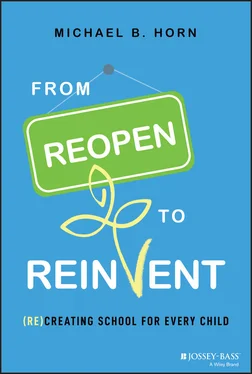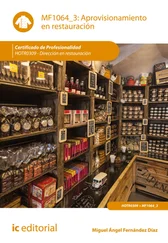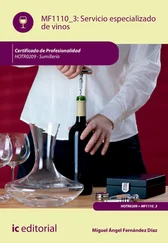Michael B. Horn - From Reopen to Reinvent
Здесь есть возможность читать онлайн «Michael B. Horn - From Reopen to Reinvent» — ознакомительный отрывок электронной книги совершенно бесплатно, а после прочтения отрывка купить полную версию. В некоторых случаях можно слушать аудио, скачать через торрент в формате fb2 и присутствует краткое содержание. Жанр: unrecognised, на английском языке. Описание произведения, (предисловие) а так же отзывы посетителей доступны на портале библиотеки ЛибКат.
- Название:From Reopen to Reinvent
- Автор:
- Жанр:
- Год:неизвестен
- ISBN:нет данных
- Рейтинг книги:4 / 5. Голосов: 1
-
Избранное:Добавить в избранное
- Отзывы:
-
Ваша оценка:
- 80
- 1
- 2
- 3
- 4
- 5
From Reopen to Reinvent: краткое содержание, описание и аннотация
Предлагаем к чтению аннотацию, описание, краткое содержание или предисловие (зависит от того, что написал сам автор книги «From Reopen to Reinvent»). Если вы не нашли необходимую информацию о книге — напишите в комментариях, мы постараемся отыскать её.
From Reopen to Reinvent,
From Reopen to Reinvent
From Reopen to Reinvent
From Reopen to Reinvent — читать онлайн ознакомительный отрывок
Ниже представлен текст книги, разбитый по страницам. Система сохранения места последней прочитанной страницы, позволяет с удобством читать онлайн бесплатно книгу «From Reopen to Reinvent», без необходимости каждый раз заново искать на чём Вы остановились. Поставьте закладку, и сможете в любой момент перейти на страницу, на которой закончили чтение.
Интервал:
Закладка:
Against that backdrop, Chapter 4describes what students are really trying to accomplish—and where traditional schools fall short. It asks all of us to move past the notion of learning loss.
Chapter 5outlines what the student experience should look like to help students accomplish their priorities. It shows why we need a system that guarantees mastery for each student.
Chapter 6reimagines the teaching experience with an emphasis on helping educators think about the “T” in teachers standing for “teams.”
Chapter 7speaks to the parent experience and how to design schools and new solutions to fit into the progress that parents desire.
Chapter 8talks about the technology imperative in today's world and offers some tips for choosing educational software.
Chapter 9discusses the importance of the right culture and how to create it.
Chapter 10helps educators create a mindset of testing, learning, and iterating. It proposes that rather than creating a “plan” and following it blindly, educators shift to thinking about “planning” as a verb—a perpetual cycle that allows people to learn and improve.
All of these changes described in the preceding chapters will be hard. Stakeholders will have varying levels of agreement. To bring the different strands together, Chapter 11offers a framework to help leaders manage change when key stakeholders have varying views on the goals of schools or how to realize those outcomes.
With the havoc that COVID has caused and the challenges educators, students, and parents face, the appetite for new solutions that work for everyone will be larger than before.
* * *
To seize the moment, we will follow the fictional stories of Jeremy and Julia set in an elementary school in California at the beginning of each chapter .
KEY TAKEAWAYS
Today's school system doesn't work well for anyone given the complex demands of today's world.
The system assumes all students have resources that they don't; it neglects teaching them certain key skills and dispositions and connecting them to other networks of people; and it sorts them prematurely.
Moving from a time-based system to a mastery-based one is imperative.
Shifting from a zero-sum mindset to a positive-sum one is overdue.
There's a way forward that can customize for different student needs and help all individuals build their passions and fulfill their human potential.
NOTES
1 1. Mark Lieberman, “Most Students Now Have Home Internet Access. But What About The Ones Who Don't?” Education Week, April 20, 2021, https://www.edweek.org/technology/most-students-now-have-home-internet-access-but-what-about-the-ones-who-dont/2021/04#:~:text=School%20districts%20are%20aware%20much%20more%20work%20needs%20to%20be%20done&text=Still%2C%20the%20report%20estimates%20between,at%20home%20for%20remote%20learning.
2 2. According to Prepared Parents, habits of success encompass a range of mindsets and behaviors, including attachment, stress management, self-regulation, self-awareness, empathy/relationship skills, executive functions, growth mindset, self-efficacy, sense of belonging, believing in the relevance of education, resilience, agency, academic tenacity, self-direction, curiosity, and purpose. Self-direction refers to students being able to drive forward the actions needed to achieve goals, with or without help. Agency refers to the ability of an individual to make their own decisions and act on them. Growth mindset means believing that one can become smarter; they aren't born with a fixed level of smarts. And executive function refers to the ability to concentrate, stay organized, juggle lots of things happening at once, and plan for the future. “Focus on Habits Instead of Test Scores,” Prepared Parents, https://preparedparents.org/editorial/focus-on-16-habits-of-success-not-test-scores/(accessed November 4, 2021).
3 3. CompetencyWorks, an initiative of the Aurora Institute, has developed an updated definition, as of 2019, of competency-based learning. Their original definition started with a question of what does “high-quality” competency-based learning, not just competency-based learning, look like? The current definition, while dropping the “high-quality” moniker in the report, has retained that emphasis on what good practice of competency-based learning looks like. It has seven parts, which are abbreviated here:
1 Students are empowered daily to make importance decisions about their learning;
2 Assessment is meaningful and yields timely, actionable evidence;
3 Students receive timely, differentiated feedback based on their needs;
4 Students progress based on mastery, not seat time;
5 Students learn actively using different pathways and varied pacing;
6 Strategies to ensure equity for all students are embedded;
7 Rigorous, common expectations for learning (knowledge, skills, and dispositions) are explicit, transparent, measurable, and transferable.
1 See Eliot Levine and Susan Patrick, “What Is Competency-Based Education? An Updated Definition,” Aurora Institute, 2019, https://aurora-institute.org/wp-content/uploads/what-is-competency-based-education-an-updated-definition-web.pdf.
2 4. Barbara Gaddy Carrio, Richard A. DeLorenzo, Wendy J. Battino, and Rick M. Schreiber, Delivering on the Promise: The Education Revolution (Bloomington, IN: Solution Tree Press, 2009), Kindle Locations, pp. 1624–1630.
3 5. “LISTEN—Class Disrupted Podcast Episode 6: Help! My Child and I Are Overwhelmed!,” The 74, June 22, 2020, https://www.the74million.org/article/listen-class-disrupted-podcast-episode-6-help-my-child-and-i-are-overwhelmed/.
4 6. Barbara Pape, “Learner Variability Is the Rule, Not the Exception,” Digital Promise Global, June 2018, https://digitalpromise.org/wp-content/uploads/2018/06/Learner-Variability-Is-The-Rule.pdf.
5 7. This stress is something that has been well documented and is the flip side of the challenges faced by marginalized students and families. See, for example, Alexandra Robbins, The Overachievers: The Secret Lives of Driven Kids (New York: Hyperion, 2007).
Chapter 1 From Threat to Opportunity
Dr. Ball slumped down at her desk after the bell rang. She couldn't help but feel like that's what the school was in: a slump .
How had it happened, though?
The summer after the pandemic started, she and the other school principals in the district, along with the central office staff, had hunkered down. They worked tirelessly to get remote learning in place and improve it in accordance with the state's mandate .
Then they worked to develop a reopening plan that would keep students and teachers safe and healthy—and able to learn—once the state started allowing people back into the buildings, which didn't happen until the spring. The team developed in-person options with rotating schedules for the students to reduce building density. They created mask rules. New air filtration systems were installed. They partnered with other districts to continue to offer a full-time virtual option for those whose parents for, whatever reason, didn't feel comfortable sending their children back in person at all. They built testing protocols, and they prioritized the most essential learning standards .
And then they detailed all their efforts in a comprehensive 70-page reopening plan that they circulated to the community. The plan had sections on everything from health, safety, and well-being to facilities and from equity and student engagement to technology. There was a section detailing plans on school personnel and staffing, professional development, and family partnerships and supports. They held several feedback sessions and iterated more .
Читать дальшеИнтервал:
Закладка:
Похожие книги на «From Reopen to Reinvent»
Представляем Вашему вниманию похожие книги на «From Reopen to Reinvent» списком для выбора. Мы отобрали схожую по названию и смыслу литературу в надежде предоставить читателям больше вариантов отыскать новые, интересные, ещё непрочитанные произведения.
Обсуждение, отзывы о книге «From Reopen to Reinvent» и просто собственные мнения читателей. Оставьте ваши комментарии, напишите, что Вы думаете о произведении, его смысле или главных героях. Укажите что конкретно понравилось, а что нет, и почему Вы так считаете.












